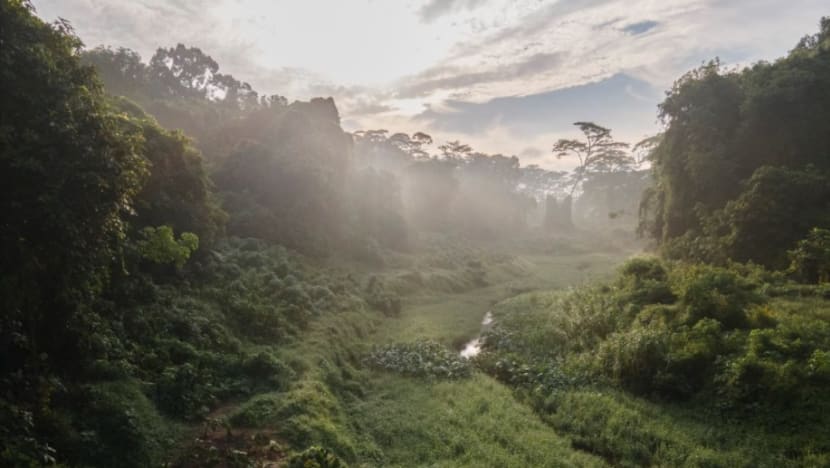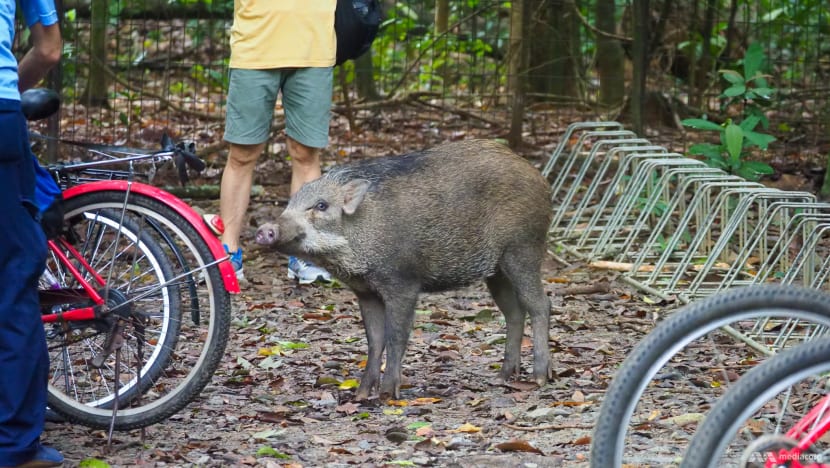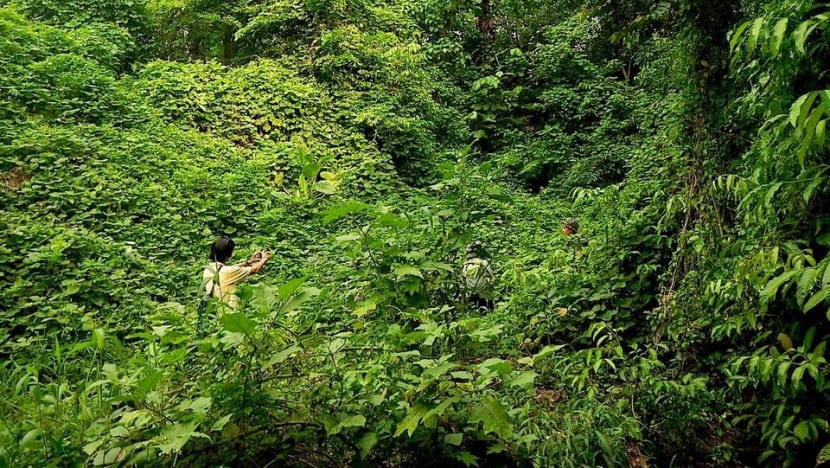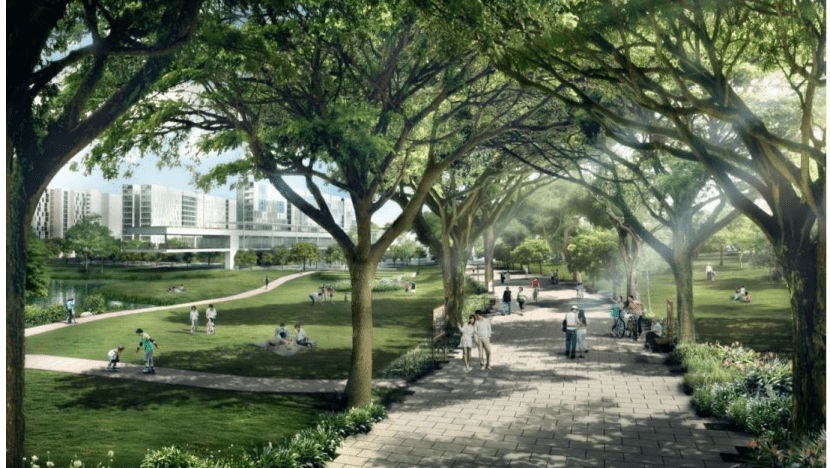Commentary: Save forests or build 4-rooms? It’s not a zero-sum game
Conserving our forests is a delicate dance in a land-scarce country and a wicked problem. But this doesn’t mean there are no solutions, says one observer.

Clementi Forest. (Photo: Facebook/Brice Li)
SINGAPORE: In late October, drone footage of Clementi Forest went viral, and many came to learn of and appreciate its wild beauty.
But after learning that the land had been earmarked for residential development, some netizens have called for its preservation, shining a spotlight on the dilemma of conserving forests in land-scarce Singapore.
A petition to protect Clementi Forest on Change.org has amassed over 10,000 signatures since its launch on Oct 26.
In response to queries, the Urban Redevelopment Authority (URA) said on Nov 30 that while Clementi Forest is classified as "Residential (Subjected to Detailed Planning)", there are no immediate plans for development yet.
Apart from providing visually stunning landscapes, preserving densely vegetated areas has many practical benefits. They help mitigate the effects of climate change by absorbing carbon dioxide from the atmosphere, reducing urban heat and preventing floods.
Sizable forests also act as wildlife corridors that connect nature reserves, promoting fauna diversity and overall health of forests.
READ: Commentary: Let Singapore’s green spaces grow wild
CONSTRUCTION AND CONSERVATION, A ZERO-SUM GAME?
However, Clementi Forest, like other secondary forests (forests that have regrown after land was cleared for agriculture and other uses) in Singapore has been viewed as a temporary landscape awaiting development.
Based on URA plans, almost half of existing secondary forests, covering a total area of about 4,700ha, could be converted into new development land uses, such as residential, commercial, institution and reserve sites within the next 10 to 15 years.
Extensive forest loss could have adverse consequences. We can experience them in the form of flash floods – the latest episode of which had battered Upper Paya Lebar Road, Lorong Gambir and Mount Vernon Road on Nov 2. Such floods arise when there is less vegetation to absorb and slow rainwater runoff.
Deforestation also reduces habitats for wild animals, which could lead to increasing wildlife appearances in urban settings. These encounters may be violent: On Nov 17, a woman was attacked by a wild boar at a Pasir Ris park.
READ: Commentary: Are we inept at handling wild animals that come our way?

At the same time, growing demand for housing, crowded MRTs and traffic congestion are all common challenges faced by Singaporeans. So how would we reconcile our need for infrastructure with the desire to save our forests?
I believe that viewing construction versus conservation as a zero-sum game is unhelpful. Instead, we should investigate how to develop land while preserving biodiversity and integrating nature into our urban landscape.
READ: Commentary: How do we decide which buildings are worth conserving?
WHICH FORESTS SHOULD STAY AND WHICH SHOULD GO?
Identifying which forests are worth conserving at the city level is essential. Over the past six decades, large areas of land have naturally regenerated into secondary forests through spontaneous vegetation growth.
For instance, the former 30ha Tagore-Lentor Forest – which in 2017 was cleared for the construction of private houses – was home to endangered flora and fauna, including the elephant foot fern and the Raffles’ banded langur.
Depending on various characteristics, including proximity to nature reserves, historical land use, topography and soil composition, secondary forests can flourish into habitats for unique, native species.
Such forests, compared to younger forests dominated by a mix of scrublands and exotic tree species, are a higher priority for conservation due to their ecological significance.
Another consideration is the size of the forest: A larger forest has more potential to be a biodiversity haven and also contributes more climate mitigation benefits.
However, due to intense, competing demands, removing a forest might become inevitable. If so, what might be the next steps?
A common approach taken for construction is to simply clear all pre-existing vegetation – drastically altering or flattening the terrain so that construction of buildings according to the proposed design can take place.

In contrast to this blank slate approach, I suggest saving habitats that have higher biodiversity within an area earmarked for development.
Such habitats include freshwater streams and patches of dense vegetation. They can be further improved by introducing primary forest communities that increase functional and structural complexity of the remaining habitats.
A good example is the Bidadari estate development, where developers plan to preserve 10ha worth of woodland to sustain wildlife such as hornbills and flycatchers. The park will take up a tenth of the estate’s space and will sit at the heart of the residential estate.
Such an approach strikes the right balance between conservation and development. The estate planners acknowledge the value of retaining existing forest, and have sought to build the town around it, not over it.
READ: Commentary: Conserving Golden Mile Complex is a paradigm shift for Singapore architecture
Forest patches can also be converted to nature parks with both ecological and cultural value, such as Thomson Nature Park. Built over a former Hainan village, it is now home to critically endangered species such as the slow loris and lesser mousedeer.
The educational utility of forests could extend even further. In Australia, bush schools allow children to engage in recreational and educational activities outdoors.
READ: Commentary: The truth behind returning wildlife is less feel-good than you think
WHAT CAN GOOD DESIGN DO TO COMPENSATE FOR FOREST LOSS?
Partially preserving existing forests while maximising their utility requires long-term vision, and should be factored into urban planning.
Prior to mapping out building sites, planners could propose a network of new green spaces that are in line with the existing terrain, water flows and naturally formed ecological corridors.

Secondly, in developing new public spaces, we should reuse and recycle what already exists on site rather than transporting large quantities of materials, such as top-soil and plant materials, to and from it.
These suggested measures may increase costs. Reusing existing natural resources may cost more than importing new materials. Increasing vegetation within housing developments would also decrease the number of buildable housing units.
Further efforts should be made to find an agreeable degree of development that fulfills the interests of involved parties: Environmentalists, land developers, and regular citizens.
More detailed questions that need to be considered include be “What are the optimum sizes of greenery for particular ecological functions?”, “What are maximum building limits that do not block wildlife movement?’ and “Should there be laws protecting sensitive habitats regardless of their location?”.
READ: IN FOCUS: How urbanised Singapore is learning to live with its wildlife
WATCH: Mandai makeover: Wildlife surveys monitor biodiversity and forest health | Video
Aside from the practical impact that clearing forests have on the urban planning needs of a country, forests give enormous intangible benefits to people too.
There are documented emotional and physiological benefits urban forests can have. A group of scientists have proved that how forest bathing (Shinin-yoku) can alleviate depression and uplift moods, while improving immune system functions and lowering blood pressure.
Managing secondary forest loss in Singapore is a wicked problem. It involves seemingly contradictory interests from multiple perspectives – a large economic burden versus ecological and biophysical consequences versus socio-cultural means.
To truly become a City in Nature, authorities, activists, citizens and planners alike must come together to decide the fate of the land we work, live and play in.
Listen to an expert discuss why conserving forests and mangroves is critical to our fight against climate change:
Yun Hye Hwang is an Associate Professor at NUS, an accredited landscape architect and landscape researcher with expertise in socio-ecological design and management strategies that respond to emerging demands of high-density cities.














